I’m not sure if I’ve mentioned this before, but I love camping.
And when I say “camping,” I don’t mean sleep-in-a-bed-with-the-windows-open glamping, I mean back in the woods, far away from human civilization, no-running-water camping.

Myself, Pat, and Jonah atop a fin in Arches National Park
My first time to go backpacking – where you’re really far removed from the civilized world – was right after I graduated high school. My friend Deric and I reserved our backcountry campsites, printed out the directions on MapQuest (this was before iPhones, mind you), and packed our ancient backpacking bags with way too much stuff.
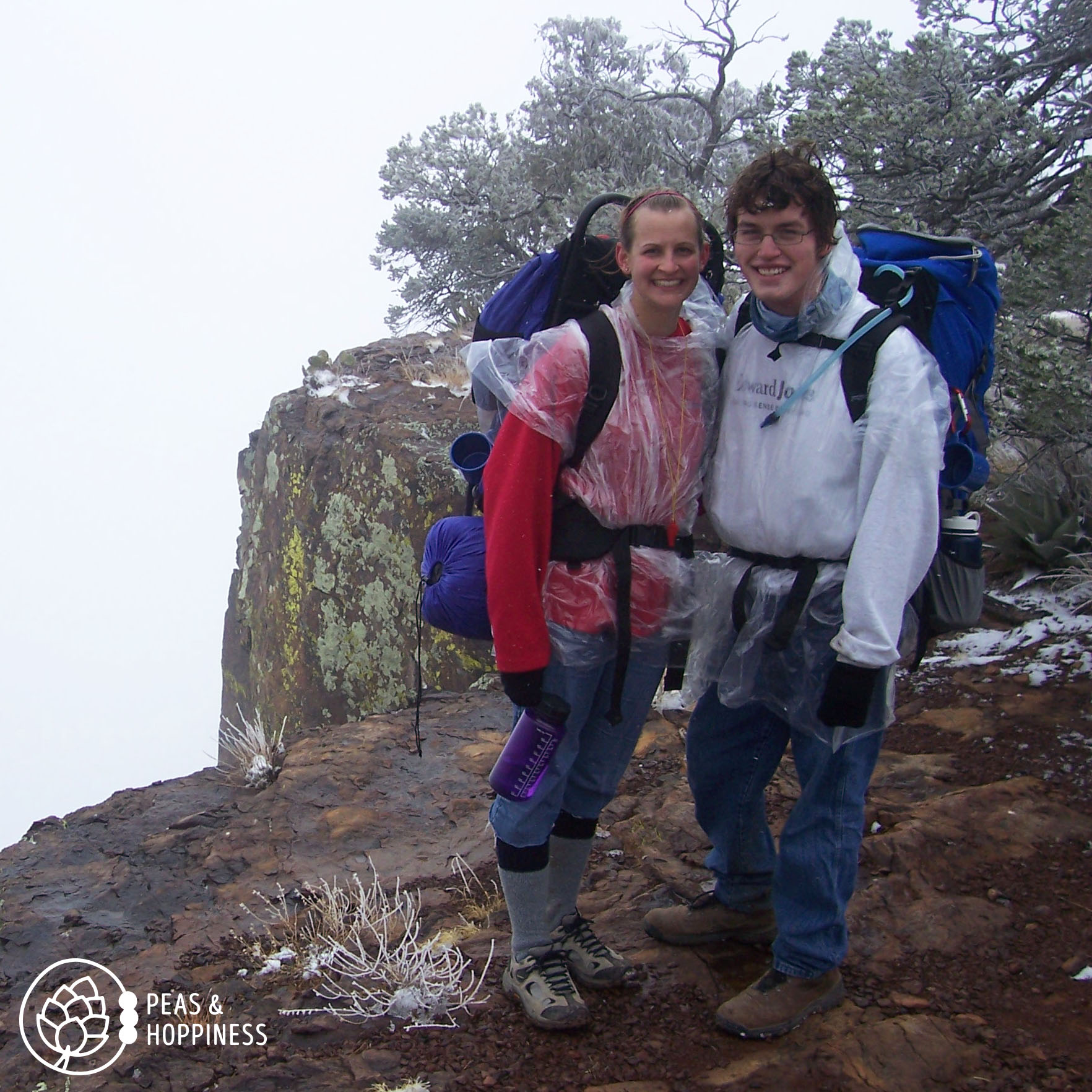
Young Ann and Deric – not their first backpacking trip, but before learning to bring more clothes than you’ll think you need (it snowed unexpectedly) and prior to purchasing modern-day internal-framed backpacks. But they lived! Big Bend National Park
I’ll admit it now: I was a novice. And I can’t believe we didn’t die (don’t tell my mom). But we didn’t die and we learned a lot of stuff. Every time I’ve gone camping since then, I’ve learned a little more. Here are a few of my best camping tips:
-
Don’t take PopTarts. They’re gross.
-
Take a sleeping pad!! It keeps you warm and makes you much more comfortable.
-
When you get old, strategically plan stays in hotels intermittently spaced between the nights of camping. Eventually you HAVE to get some sleep and it turns out the ground is less comfortable when you’re 30 than when you were 10.
-
Always pack Jolly Ranchers. They are a magical treat which bequeaths energy on long hikes.
A few weeks ago I introduced my two favorite fellows to my kind of camping. We didn’t backpack, but together we explored seven national parks, kayaked in Antelope Canyon, squeezed through slot canyons, and found our own dispersed campsites tucked away in national forests.
And in the evening, when we were exhausted and famished after a full day of exercise in the sun, I would make a fire and cook dinner. It’s exhilarating to create a meal in the middle of nowhere, to show your favorite 9-year-old how to start a fire and use the coals to fuel a makeshift camp stove, the skillet resting on two rocks in the fire ring.
Of course I cheated. I used a lighter and pre-packaged Rice-a-Roni, but it’s still really cool to make a hot meal in the middle of nowhere from practically nothing. So because my life generally revolves around food, I’d like to share my best camping cooking tips – based on years of experience and feedback from this most recent trip.
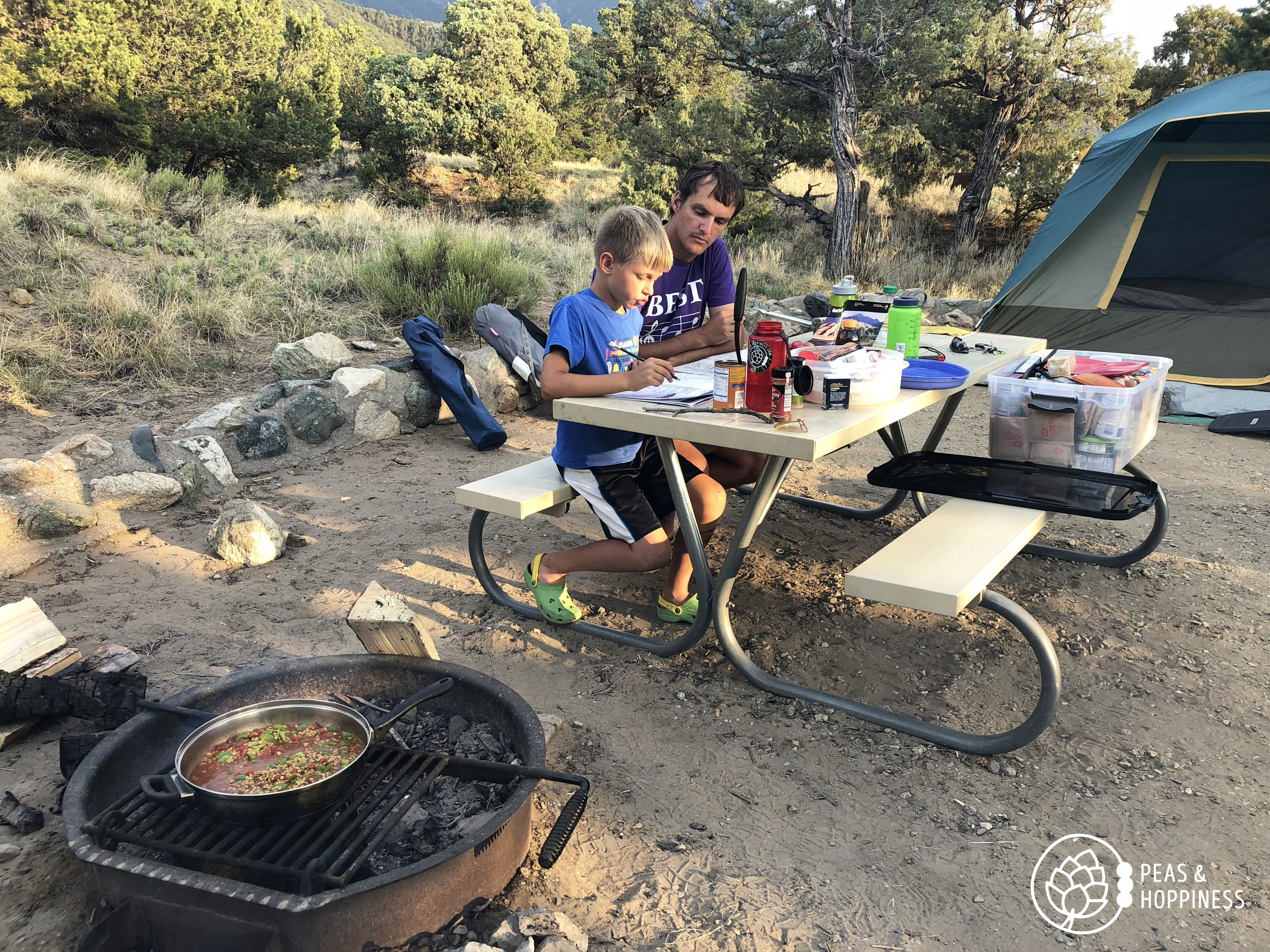
Working on Jonah’s Junior Ranger book while Lentil Frito Pie cooks over the fire. Great Sand Dunes National Park.
Tip #1: Bring Lentils
Yes, I said it. Here’s why:
-
Lentils cook relatively quickly (way faster than dried beans)
-
They are relatively light (at least lighter than a can of already cooked beans – important when backpacking, but not necessarily a concern when car camping)
-
They’re high in fiber, protein, and carbs – all of which we were in desperate need of after miles of hiking in the hot sun
-
Lentils are SO GOOD and pair well with Fritos (see: Lentil Frito Pie)
-
They last forever. Dry lentils aren’t perishable, so the 110-degree heat didn’t phase these babies (like it did our poor, melted cheese)
Because we camped multiple days in a row in the hot, hot dessert, we didn’t have access to ice. Thus, when I planned our meals I had to take into consideration foods which wouldn’t spoil but still have at least a little bit of nutrition.
In addition to lentils I also brought canned beans and canned tomatoes – both great additions to multiple recipes and high in some of the major nutrients (i.e. fiber) which our day snacks were lacking.
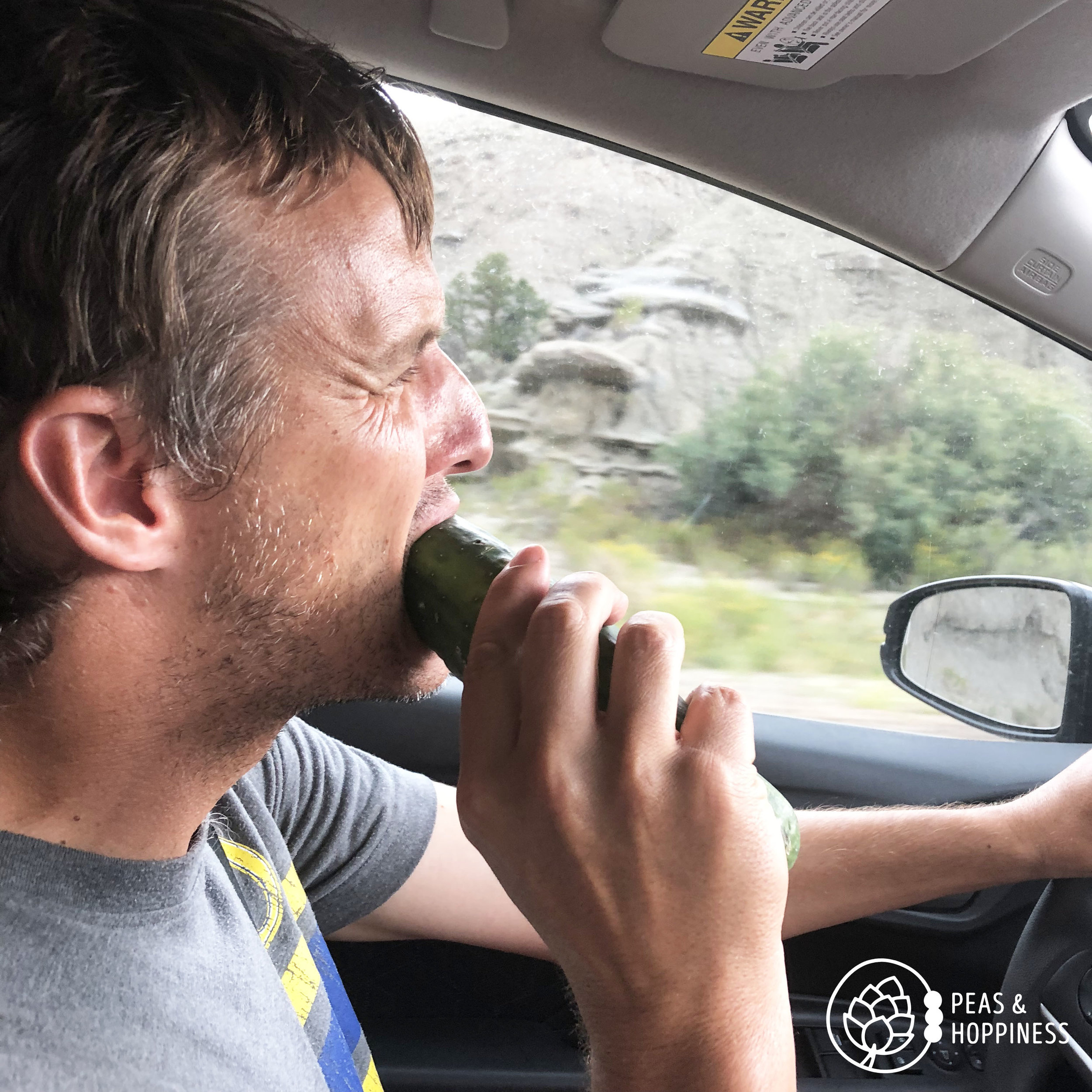
9-Day old camping beard and eating cucumbers whole. I kinda like this guy 😉
Tip #2: Eat Fruits & Veggies Whole
A huge challenge anytime I’m away from home is to include enough fruits & veggies (ahem: see fiber) in my diet. We all know how few and far between veggies are on menus, and strawberries get mushy if they’re not refrigerated. However, some veggies are pretty hearty.
Dessert sun and freezing temperatures definitely shorten the life of vegetables, but we took whole cucumbers and carrots and they lasted about 10 days on our trip. Yes, they withstood the boiling lava hot temps in our car while we were hiking in 95+ degree heat.
Pro tip: leave your veggies as nature made them. Wash and scrub them, but DON’T PEEL THEM! If you leave them whole and intact, they can last for weeks without refrigeration.
Here’s the list of produce we took:
-
Cucumbers
-
Carrots
-
Bell peppers (added to recipes and eaten within the first few days
-
Peaches (eat within a few days)
-
Apples
-
Clementines
-
Oranges
-
Canned green beans, peas, tomatoes, and beans (very handy to add to recipes and when our produce eventually spoiled…)
The cucumbers and carrots were getting a little squishy after a week or so and we had to toss a couple that started to mold. But keeping them as dry as possible and letting them cool down in the evening helped extend their life.
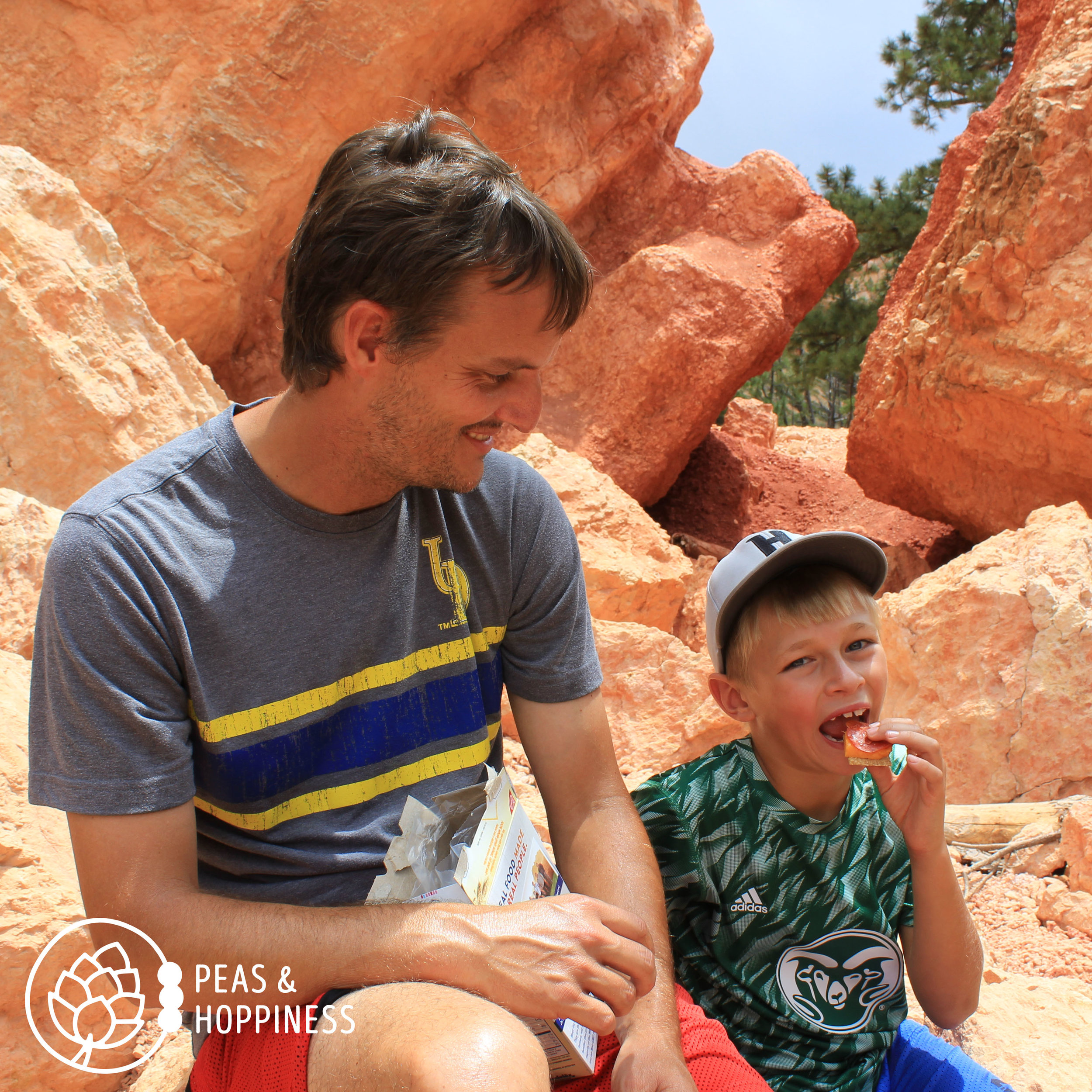
Pepperoni + (melted) cheese + Triscuit sandwiches on our hike in Bryce National Park
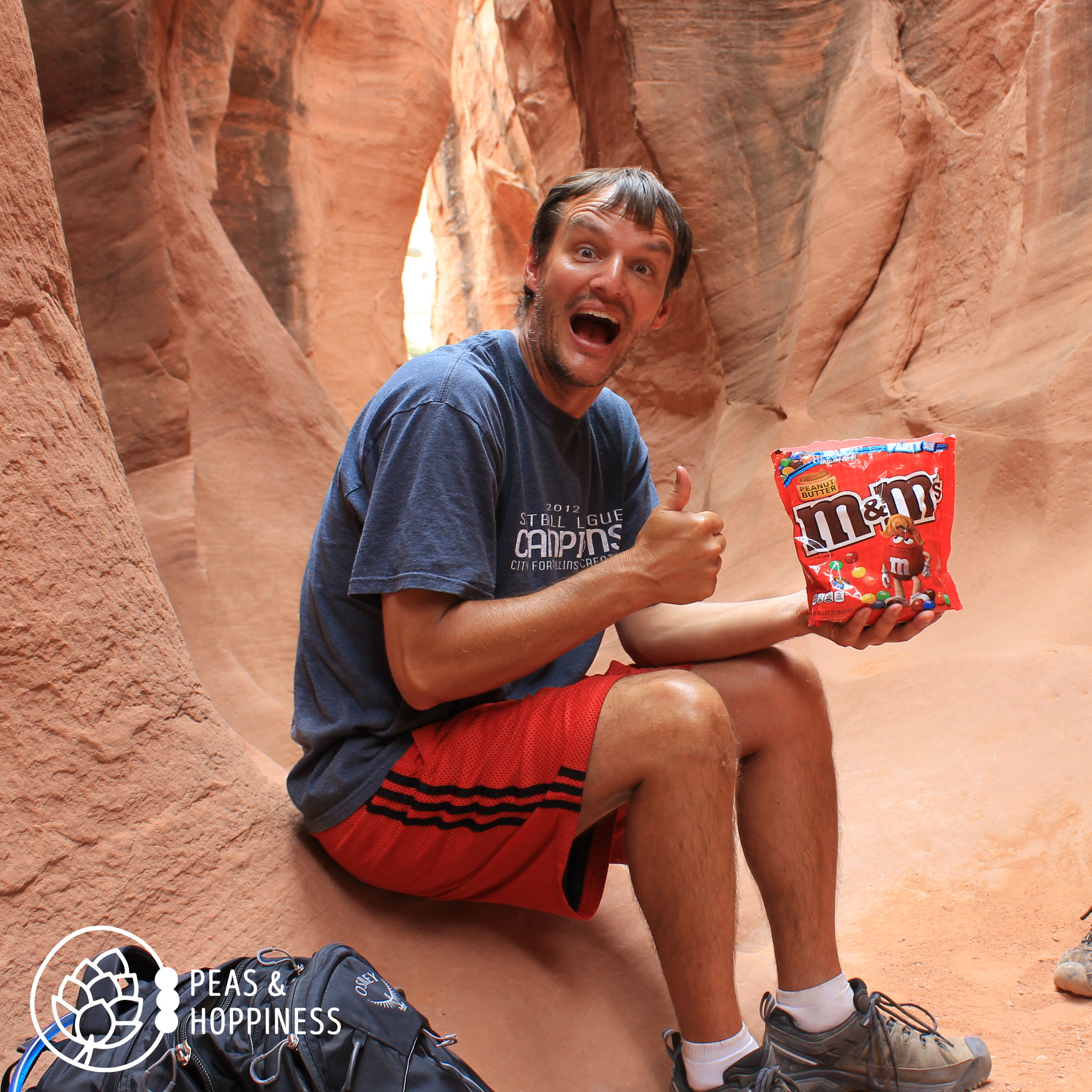
I’m not sure if he’s delirious from the sun and lack of calories or if I’m finally rubbing off on him and he’s really that excited about peanut butter M&Ms! A tasty treat in the slot canyons
Tip #3: Eat Carbs & Salt when you Hike in the Desert
Wow. I kinda forgot how many calories you burn and how much you sweat when you hike for 5+ hours. We got hungry, you guys.
Of all times, when you’re burning so much energy and losing so many electrolytes, pre-packaged noodles and rice are perfect to end the day. I added canned chicken and tuna for protein and threw in canned veggies to give us a little more nutrition. Here are a few of the camp favorites:
-
Macaroni & Cheese with Chicken & Peas
-
Rice-a-Roni with a side of Green Beans
-
Chili Bean Nachos (cans of chili over tortilla chips)
-
Red Beans & Rice (simple, but one of the favorite meals after I added lots of spices!)
-
Tuna Helper
I love eating when I’m hungry. And on this trip we enjoyed all kinds of goodies (i.e. Cheese-its and sour gummy worms) which we rarely have at home. So fun!
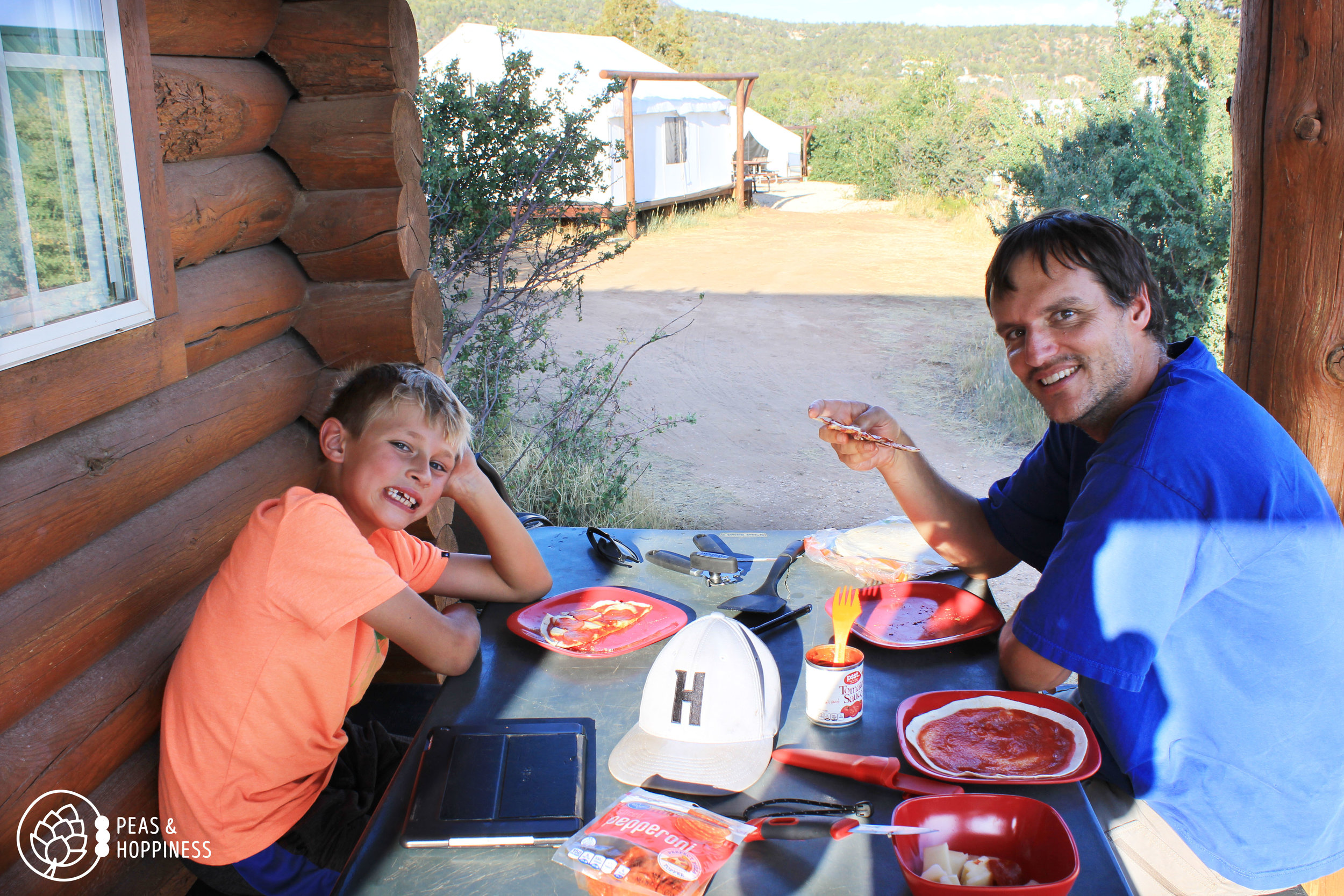
Back in “civilization” at our cabin near Zion, eating tortilla pizzas cooked over the fire. They are as tired as they look!
For additional ideas, check out this list of Road Trip Snacks. Because I’ve had a few requests, here’s a link to our itinerary and menu.
What are your favorite camping tips? I’d love for you to share in the comments below!
Happy hiking! from Peas & Hoppiness <3